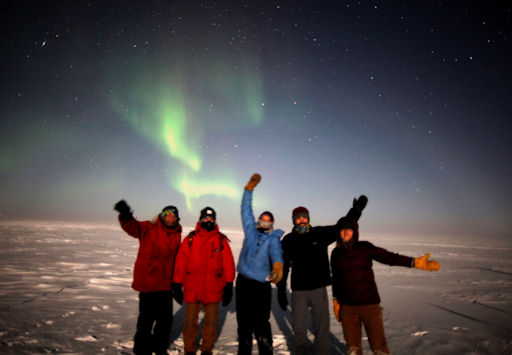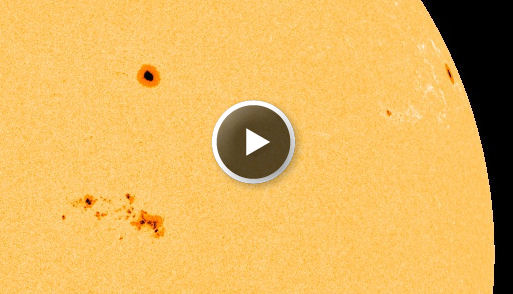They came from outer space--and you can have one! Genuine meteorites are now on sale in the Space Weather Store. | | |
ROSAT DECAY UPDATE: The massive ROSAT X-ray space telescope continues to descend toward Earth. Latest estimates place the re-entry around noon Universal Time on Oct. 23rd. Uncertainties exceed 10 hours, which makes it impossible to say exactly where ROSAT will re-enter. Many sky watchers are seeing ROSAT in the night sky shining about as brightly as a 1st magnitude star. Check Spaceweather's Satellite Tracker for local flyby times. (There's an app for that, too.)
ASTEROID FLYBY: Asteroid 2009 TM8 is flying through the Earth-Moon system today. There is no danger of a collision with the 8 meter-wide space rock, which will be approximately 346,000 km away at closest approach. [3D orbit]
WEEKEND AURORAS: Over the weekend, Earth passed through a minor solar wind stream that sparked Northern Lights around parts of the Arctic Circle. Ed Stockard sends this picture from Summit Station, an NSF sponsored research station on top of the Greenland ice sheet:

"The moon provided all the illumination we needed for this late-night picture," says Stockard. "Note the lunar fogbow in the background."
"From left to right are Ed, Brad, Sonja, Ken and Christina," he continues. "We are the first crew for the winter of 2011-2012, and we have 3 weeks to go before the next crew takes over." Between now and then he expects to see lots more auroras. Stay tuned! Aurora alerts: text, voice.
ACTIVE SUNSPOT: Active region 1319 contains so many individual sunspots that some observers have likened it to a swarm of army ants. The swarm is growing. Over the weekend, the sunspot group's total area nearly tripled as shown in this movie from the Solar Dynamics Observatory:

As AR1319 has grown, the complexity of its magnetic field has increased as well. The sunspot's magnetic canopy is now unstable and harbors energy for strong M-class solar flares. NOAA forecasters estimate a 40% chance of such an eruption during the next 24 hours. Solar flare alerts: text, voice.
See for yourself: AR1319 looks fantastic through Explore Scientific's White Light Solar Observing System.
more images: from James Kevin Ty of Manila , Philippines; from Stephen W. Ramsden of Atlanta, GA; from Howard Eskildsen of Ocala, Florida; from Mariano Ribas of Buenos Aires, Argentina; from Chris Schur of Payson, Az; from Cai-Uso Wohler of Bispingen, Germany;
Potentially Hazardous Asteroids (
PHAs) are space rocks larger than approximately 100m that can come closer to Earth than 0.05 AU. None of the known PHAs is on a collision course with our planet, although astronomers are finding
new ones all the time.
On October 17, 2011 there were 1250 potentially hazardous asteroids.
Notes: LD means "Lunar Distance." 1 LD = 384,401 km, the distance between Earth and the Moon. 1 LD also equals 0.00256 AU. MAG is the visual magnitude of the asteroid on the date of closest approach. | | The official U.S. government space weather bureau |
| | The first place to look for information about sundogs, pillars, rainbows and related phenomena. |
| | Researchers call it a "Hubble for the sun." SDO is the most advanced solar observatory ever. |
| | 3D views of the sun from NASA's Solar and Terrestrial Relations Observatory |
| | Realtime and archival images of the Sun from SOHO. |
| | from the NOAA Space Environment Center |
| | the underlying science of space weather |
| | for out-of-this-world printing and graphics |

